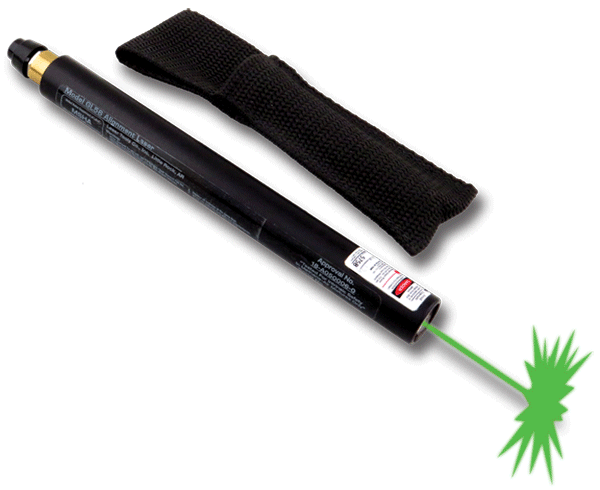Low-level laser therapy Safe Laser (LLLT) helps with ulcerative wounds through several mechanisms- Stimulation of Tissue Repair- LLLT promotes cellular metabolism and proliferation and accelerates tissue repair and renewal. It stimulates the fibroblast, collagen and angiogenesis process (formation of blood vessels) which are all essential for wound healing. It could speed up healing of wounds.
Reduction of Inflammation – LLLT is anti-inflammatory by reducing cytokines that cause inflammation and encouraging mediators to reduce inflammation. In the case of ulcerative wounds which are prone to inflammation, it can slow healing and increase the damage to tissues, LLLT can help reduce inflammation and help create a healthy environment for healing.
Pain Relief- LLLT modulates pain perception by altering nerve conduction and reducing the release pain mediators such as substance P. In the case of ulcerative wounds which can be associated with severe discomfort and pain, LLLT can help alleviate pain and improve overall experience of the patient.
Improved Blood Circulation LLLT increases vasodilation and microcirculation and results in increased blood flow to the wound site. The improved blood flow provides nutrients and oxygen, which helps to promote healing. It also aids in the removal of waste products as well as toxic substances from the site of wound.
Antimicrobial Effects LLLT was found to possess antimicrobial properties that reduce the risk of infection for ulcerative lesions. By encouraging bacterial clearance and preventing further colonization of the wound area, LLLT can help reduce the incidence of wound infections and promote faster healing.
Reduced Scar Formation - LLLT helps reduce the appearance of scars on ulcerative wounds by encouraging tissue regeneration and remodeling. By stimulating the growth of collagen fibers as well as the alignment of collagen bundles LLLT can help produce better scar tissue that is more organized and improve results for cosmetics.
In general, low-level Laser treatment with Safe Laser helps to speed up recovery, reduced pain and improved outcomes for wounds. It's best to consult a healthcare provider for the best treatment and care for ulcerative wounds prior to utilizing LLLT. Have a look at the top rated safe laser 1800 for website recommendations including lagylezer terapia, gyógyító lézer készülékek, lágy lézer, lezer kezeles, lágy lézer, safe laser kezelés budapest, orr lézer készülék, orvosi lágylézer, lágylézer kezelés árak, lágylézer készülék bérlés and more.

How Can Safe Laser Aid In The Treatment Of Ear, Nose, And Throat Issues?
LLLT (low-level laser therapy) is a multi-faceted therapy that can help treat disorders of the ENT. It is a great option for treating conditions such a sinusitis rhinitis and tonsillitis. Inflammation is a cause of symptoms like nasal congestion, sore neck, and ear irritation.
Pain Relief- LLLT modulates pain perception by affecting nerve conduction and decreasing the release of substances that cause pain, such as substance P. In ENT ailments, LLLT can help alleviate discomfort caused by sore throat, earache, or pressure in the sinus.
Enhanced Tissue Healing- LLLT stimulates cellular metabolism and growth which results in faster tissue repair and regeneration. In ENT ailments like otitis media (middle ear infection) or pharyngitis (sore throat), LLLT can help promote faster healing of inflamed or infected tissues.
Improved blood circulation - LLLT stimulates microcirculation aswell as vasodilation. This results in an increased flow of blood to the region affected. The improved blood circulation promotes healing by providing nutrients and oxygen to the tissues.
LLLT is antimicrobial, and is able to reduce the amount of bacteria or viruses in the throat and nasal passages. This is beneficial in treating infections such as tonsillitis or sinusitis.
Treatment of Allergic Symptoms LLLT helps relieve symptoms of allergic rhinitis and hay fever by reducing inflammation in the nasal passages. This may result in less nasal congestion and the occurrence of sneezing.
Tinnitus - LLLT could be used to treat tinnitus which is a condition characterized with hearing ringing. LLLT, while not completely understood, may improve blood flow in the auditory system, and may reduce inflammation, leading to less hearing.
Safe Laser's low-level treatment is non-invasive, drug free and can speed up healing. Prior to using LLLT, consult with a specialist ENT for a diagnosis and advice on treatment. Have a look at the recommended safe laser bérlés for site tips including mozgásszervi problémák, lágylézer készülék, lágy lézer, orvosi lézer készülékek, laser hu, lágylézer kezelés, orvosi lézer készülékek, laser kezelés, gyógyító lézer, lágylézer ár and more.

How Long Is It Before A Dental Laser Can Be Used To Treat Dental And Oral Issues?
Safe Laser low-level therapy (LLLT) that is used to treat dental and oral ailments, offers a broad range of effectiveness. This depends on aspects like the particular condition which is treated, the severity of the condition and the patient's response to the treatment. LLLT is generally suggested over a long period of time to get the most effective results.
The severity and type of dental condition can affect the amount of LLLT treatment sessions that are required. Conditions such as gingivitis, periodontitis, oral ulcers, or temporomandibular joints (TMJ) issues could require different treatment methods and different amounts of LLLT sessions.
Individual Response to Treatment - Factors like oral health, immunity function and healing capability can influence the way a patient responds to LLLT. Some individuals react to treatment faster and notice a greater improvement of symptoms. Some individuals might require more time to complete the treatment.
Treatment plan- The treatment regimen that a dentist recommends has a significant impact on the frequency and length of LLLT treatments for dental and oral conditions. Healthcare providers may tailor the treatment program to meet person's requirements, which could include scheduling LLLT sessions at least once per week or at specific intervals over a long period of time.
Acute Conditions Acute Conditions vs. Chronic Conditions Acute conditions - The number of LLLT treatment sessions required can be dependent on the distinction between acute and chronic conditions. For acute conditions, such as oral ulcers or pain following surgery might require only a few sessions of LLLT to offer relief. Chronic diseases such as TMJ disorder or periodontitis may require more attention.
While some people will experience improvements in their oral or dental issues after a couple of LLLT treatments, others might require a longer process to attain the best results. To ensure that you get the most out of LLLT therapy, it is important to follow the instructions provided by your dentist and to attend scheduled sessions. Additionally, ongoing examination of your oral health and regular communication with a dental professional is essential to ensure proper management and changes of the treatment plan as necessary.


